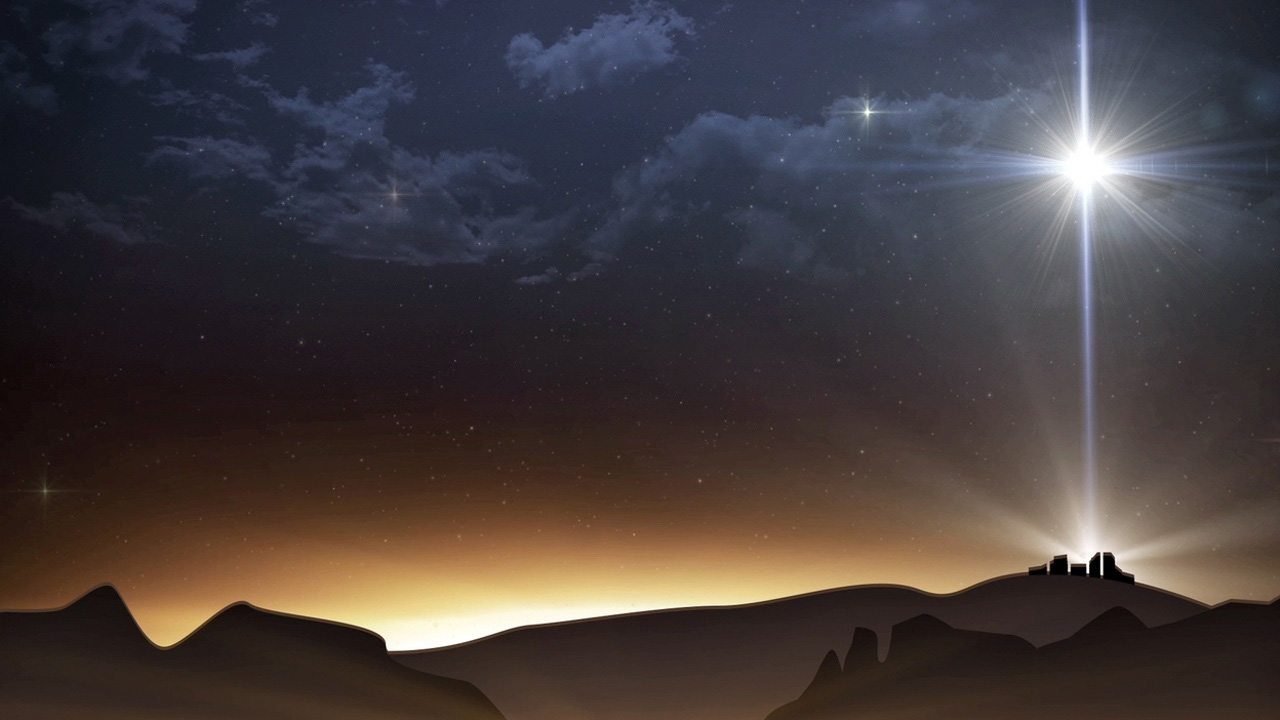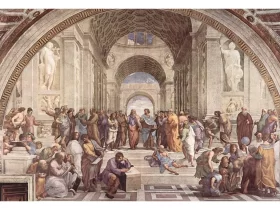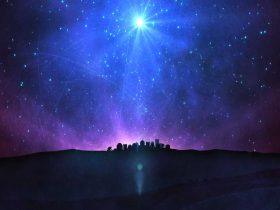One of the most beautiful images at Christmas is the Star, leading the Magi to Jesus at Bethlehem. But was there really a star? Many believers claim it was a supernatural act of God, and reject scientific explanations. Of course, Atheists claim it’s all a myth (despite the overwhelming scientific evidence for God and the historical fact of Jesus!) In this post I’ll suggest a way to harmonize science, modern computers, the Bible, and history. It’s a stellar example of modern science supporting belief in God and the truth of the Bible.
In our modern search for the Star, we have two advantages. One is computers. Computers can reproduce how the sky looked from any point on Earth at any time in history. Second is the 1998 discovery that Herod the Great died in 1 BC, not 4 BC as had been believed. (It was discovered that there was a copying error in later manuscripts of the Jewish historian Josephus.) When we examine the skies of the Middle East for the years 3 BC and 2 BC, astonishing events appear.
Below is a spectacular theory that supports every claim in the Bible. I have come to believe it is true. To shorten this, I’ll give you the events in chronological order, and you can go back yourself to check how these match up exactly with the Biblical statements in the second chapter of the Gospel of Matthew, and with dozens of other Biblical references and historical facts. I am indebted to Rick Larson and his excellent video The Star of Bethlehem, and to Gerald Culley and his extremely well-researched article The Star of Bethlehem in Bible and Spade magazine.
September, 3 BC – Jupiter begins a 7-month triple conjunction with Regulus. Babylonian astronomers, quite possibly the best in the world at that time, who may be of Jewish descent (remnants of the Babylonian captivity, during which time Daniel was their leader), witness a spectacular triple conjunction of Jupiter (known to the ancients as the “King Planet”) and the star Regulus. The Babylonians called this star “Sharru,” meaning “the King,” and Regulus was also known as the “King” star by the Romans. Jupiter passes Regulus three times, and traces a crown above it. Regulus is the brightest star in the constellation of Leo the lion. The Bible in different places compares the Israelite Tribe of Judah, the tribe of King David and Jesus, with a lion. This triple conjunction of the two kings happens only twice in every 83 years.
September 11, 2 BC – As the triple conjunction begins, the Sun rises with behind it (an experienced astronomer would know this) the womb of the virgin in the constellation Virgo. At the foot of the Sun is a slim crescent moon. The Sun appears here only one day every year, and the moon has this shape one day each lunar cycle (29 days), so this combination is a very rare event. The signs point to the birth of a King in Judah. This could be the date of Christ’s conception, where the Angel Gabriel appears to Mary. Remember that planets in those days were thought of as wandering stars, because they appeared to move around the heavens. Compare this also to John’s vision in Revelation 12:1-2:
And a great sign appeared in heaven: a woman clothed with the sun, with the moon under her feet, and on her head a crown of twelve stars. She was pregnant and was crying out in birth pains and the agony of giving birth.
February 5, 2 BC – The Roman Senate orders an empire-wide census. Joseph and Mary go to Bethlehem, the town of King David, to be counted.
June 17, 2 BC – Nine months after the Jupiter/Regulus conjunction, the King Planet Jupiter joins the planet Venus, universally associated with femininity, in conjunction. The planets are so close that they appear to the naked eye to be touching. It is the brightest “star” anyone alive has ever seen. It is visible for about an hour after sunset. Such an event has only occurred three times in the 2,000 years since, and the other occasions were not visible in the Middle East. This conjunction takes place in the constellation of Virgo the Virgin. Jesus is born. The sacrificial “lamb of God” is born in Bethlehem, which is where sacrificial lambs were bred and born for the Temple at Jerusalem. Jesus is born in the late spring, not winter, and the shepherds who cared for those lambs were out in the warmer weather sleeping with the flocks during birthing season.
Late December 2 BC – The Babylonian astronomers, known as “Magi” or wise men, arrive with their entourage in Jerusalem. It’s been a long and difficult journey, and there was doubtless time needed to prepare. Marco Polo wrote in his travels that he visited the tombs of the Magi in Saveh, Persia, and that the Magi also left from that city when they set off to find Jesus. The Magi travel about 600 miles by camel and as they travel Jupiter stays ahead of them. The Magi ask Herod “Where is he who has been born king of the Jews? For we have seen his star [rising] in the East, and have come to worship him.” Herod doesn’t have a clue. (This shows the star was not a comet or supernova.) Herod asks his priests where the Messiah is to be born, and they quote him the Old Testament prediction of Bethlehem. Herod tells the Magi to go and report back.
December 25, 2 BC – The Magi leave Jerusalem and head south to Bethlehem, only five miles away. Jupiter is directly south on this date as they walk out of Jerusalem, and they get to Bethlehem by following the “Star.” On this exact date Jupiter goes into retrograde motion, it appears to “stop” its wandering among the stars. The Magi would know that Jupiter had stopped its motion. The Magi bring gifts; it is the first Christmas. Jesus is no longer a newborn infant; the original Greek refers to him as a toddler at this point. I also find it interesting that a good argument can be made that 2 BC was the high point of the Roman Empire.
The heavens operate like clockwork. For these cosmic events to have accompanied the birth of Jesus, God had to have known the exact dates when the universe was created.
Merry Christmas!


















Leave a Reply